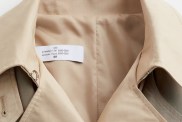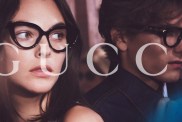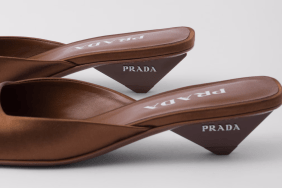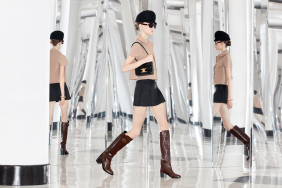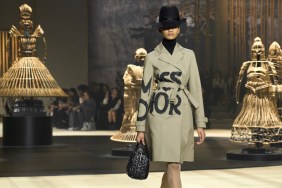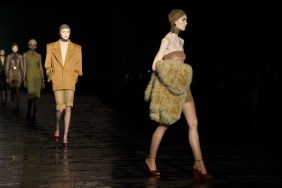
However, the trend for transparent looks has gone way beyond sexy subtlety these past few seasons.
It’s not uncommon to see women put an outfit back on the hanger at a store because their derriere is fully exposed, or the top is blatantly transparent, and not meant to be worn with undergarments.
It should come as little surprise that much of the current trend that we see in fashion at the moment ties back to the 60s and Rudi Gernreich.
Gernreich became widely known as the “topless designer” after he invented the topless swimsuit, as well as the pubikini – a bikini with a pubic hair exposing window in the front. He is also responsible for the first thong swimsuit, and the wireless, sheer “No-Bra Bra,” from Warner.
While Gernreich may be a pioneer when it comes to literal transparency – which has made its way onto catwalks as diverse as Jil Sander, Erin Fetherston, and John Galliano in recent seasons – it was Madeleine Vionnet who first made this penchant chic. In the 1930s, the iconic designer used transparent fabrics which she manipulated, layered, and draped so well that she was able to give her evening gowns a fluid, goddess-like effect that transcended any issues of overexposure. You may even recall these from the Met’s Goddess exhibit a few years back.

Later, in the 60s, Paco Rabanne made a slew of dresses out of chain mail and plastic discs. I was able to see a number of these pieces up close at the preview for the brand’s latest fragrance, Lady One Million, and they are truly works of art. But wearable? Not really. Andre Courreges and designers like Lainey Keogh similarly incorporated chain mail and net into their designs.
In the 90s, designers like Calvin Klein popularized a faux transparency in which fabrics no longer necessarily fully exposed the body, but mimicked transparency with the use of flesh-colored fabrics, creating what is now known as the “bare” look. This look reached new heights when Sarah Jessica Parker’s alter ego Carrie Bradshaw wore a “naked” dress in a shoot for an advertisement that ran on the side of a bus in an episode of Sex and the City.

Where does that leave us today? It seems that many designers are refusing the craftsmanship of 30s Madeleine Vionnet, eschewing the art of a Paco Rabanne dress from the 60s, and leaving behind the subtle effect of flesh-toned 90s Calvin Klein. Instead, they are encouraging us to wear sheer maxi dresses and lacy dresses that look more like lingerie than anything cocktail appropriate.

